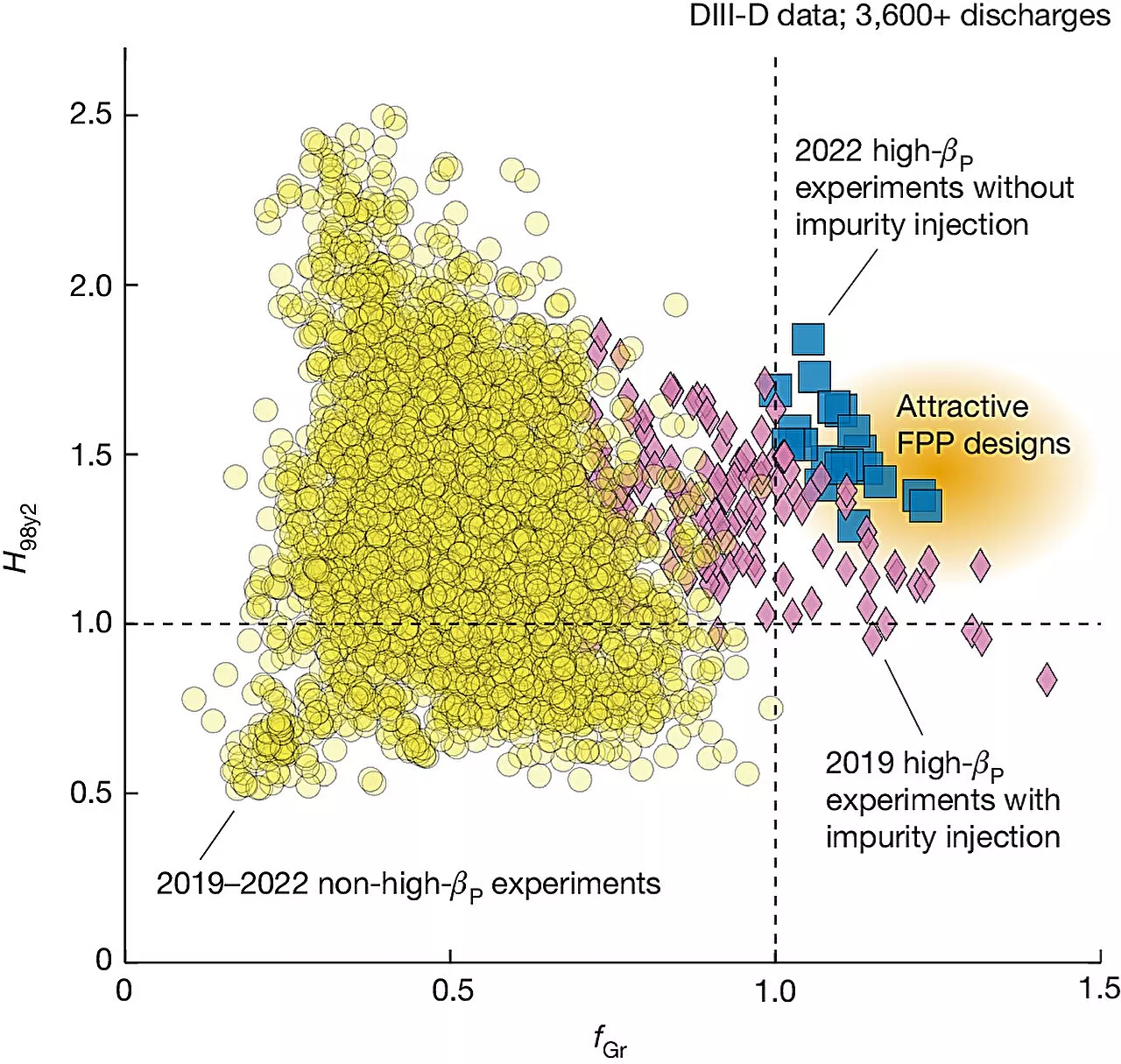Physicists developed a technique to arrange atoms in much closer proximity than previously possible, down to 50 nanometers. The group plans to use the method to manipulate atoms into configurations that could generate the first purely magnetic quantum gate -- a key building block for a new type of quantum computer.
Proximity is key for many quantum phenomena, as interactions between atoms are stronger when the particles are close. In many quantum simulators, scientists arrange atoms as close together as possible to explore exotic states of matter and build new quantum materials.
"We have gone from positioning atoms from 500 nanometers to 50 nanometers apart, and there is a lot you can do with this," says Wolfgang Ketterle, the John D. MacArthur Professor of Physics at MIT."At 50 nanometers, the behavior of atoms is so much different that we're really entering a new regime here."
The team's new approach, like current techniques, starts by cooling a cloud of atoms -- in this case, to about 1 microkelvin, just a hair above absolute zero -- at which point, the atoms come to a near-standstill. Physicists can then use lasers to move the frozen particles into desired configurations.
"The idea of sending both beams through the optical fiber meant the whole machine could shake violently, but the two laser beams stayed absolutely stable with respect to each others," Du says.As a first test of their new technique, the team used atoms of dysprosium -- a rare-earth metal that is one of the strongest magnetic elements in the periodic table, particularly at ultracold temperatures.
Optics Nanotechnology Chemistry Spintronics Research Quantum Computers Computers And Internet Encryption
United Kingdom Latest News, United Kingdom Headlines
Similar News:You can also read news stories similar to this one that we have collected from other news sources.
 Physicists arrange atoms in close proximity, paving way for exploring exotic states of matterProximity is key for many quantum phenomena, as interactions between atoms are stronger when the particles are close. In many quantum simulators, scientists arrange atoms as close together as possible to explore exotic states of matter and build new quantum materials.
Physicists arrange atoms in close proximity, paving way for exploring exotic states of matterProximity is key for many quantum phenomena, as interactions between atoms are stronger when the particles are close. In many quantum simulators, scientists arrange atoms as close together as possible to explore exotic states of matter and build new quantum materials.
Read more »
 Nuclear Fusion Breakthroughs Bring Near-Limitless Energy CloserPhysicists say the discovery offers a potential avenue to 'economically attractive fusion energy' in the future.
Nuclear Fusion Breakthroughs Bring Near-Limitless Energy CloserPhysicists say the discovery offers a potential avenue to 'economically attractive fusion energy' in the future.
Read more »
 Physicists show that light can generate electricity even in translucent materialsSome materials are transparent to light of a certain frequency. When such light is shone on them, electrical currents can still be generated, contrary to previous assumptions. Scientists have managed to prove this.
Physicists show that light can generate electricity even in translucent materialsSome materials are transparent to light of a certain frequency. When such light is shone on them, electrical currents can still be generated, contrary to previous assumptions. Scientists have managed to prove this.
Read more »
 Physicists discover new way to make strange metalBy tinkering with a quantum material characterized by atoms arranged in the shape of a sheriff's star, MIT physicists and colleagues have unexpectedly discovered a new way to make a state of matter known as a strange metal.
Physicists discover new way to make strange metalBy tinkering with a quantum material characterized by atoms arranged in the shape of a sheriff's star, MIT physicists and colleagues have unexpectedly discovered a new way to make a state of matter known as a strange metal.
Read more »
 Physicists build new device that is foundation for quantum computingScientists have adapted a device called a microwave circulator for use in quantum computers, allowing them for the first time to precisely tune the exact degree of nonreciprocity between a qubit, the fundamental unit of quantum computing, and a microwave-resonant cavity.
Physicists build new device that is foundation for quantum computingScientists have adapted a device called a microwave circulator for use in quantum computers, allowing them for the first time to precisely tune the exact degree of nonreciprocity between a qubit, the fundamental unit of quantum computing, and a microwave-resonant cavity.
Read more »
 Physicists overcome two key operating hurdles in fusion reactionsA team of physicists from several institutions across the U.S. working with a colleague from China, at the DIII-D National Fusion Facility, in San Diego, California, has devised a way to overcome two key hurdles standing in the way of using fusion as a general power source.
Physicists overcome two key operating hurdles in fusion reactionsA team of physicists from several institutions across the U.S. working with a colleague from China, at the DIII-D National Fusion Facility, in San Diego, California, has devised a way to overcome two key hurdles standing in the way of using fusion as a general power source.
Read more »
